Dandelion
Can be found almost anywhere and at any time of year. There are up to two hundred and thirty five micro species of dandelion all lumped under the Taraxacum officinale name.
| Hedgerow Type | |
| Common Names | Dandelion, Dent-de lion, Pissabed, Piss-en-lit |
| Scientific Name | Taraxacum officinale |
| Season Start | Jan |
| Season End | Dec |
Flowers
Quite large yellow flowers made up of many fine, long, thin petals turning into the well known sphere of seed parachutes.
Flower Stem
Long, thin and hollow stem for the flower, the leaves have no stem and grow from the base of the plant.
Seeds
Everybody knows the Dandelion clock of seeds. These can travel long distances to spread to almost anywhere.
Habitat
Pasture, fields, hedgerows, gardens, roadside, woods and waste ground, pretty much everywhere.
Possible Confusion
Cats Ear, Hawkbit or Goats Beard but they are all edible.
Taste
The leaves cooked like spinach are very bitter but the taste grows on you the more you eat.
Frequency
Very common.
Collecting
Only the younger leaves should be consumed. The root can be dug up and roasted in a fire.
Medicinal Uses
Dandelion is a diuretic, increasing urine production, so is good as detox for the blood and helps improve kidney and liver function. It can be used as a tea, the roots, leaves and flowers. The white sap in the stem and leaves has been used traditionally for curing warts.
Other Facts
Eaten by man in times of famine the roots contain starch. The leaves are diuretic hence the name Pissabed. The dandelion has many food uses such as salad, a green vegetable, a flavouring for soft and alcoholic drinks, a substitute for coffee and a calorific staple.



 (15 votes, average: 3.60 out of 5)
(15 votes, average: 3.60 out of 5)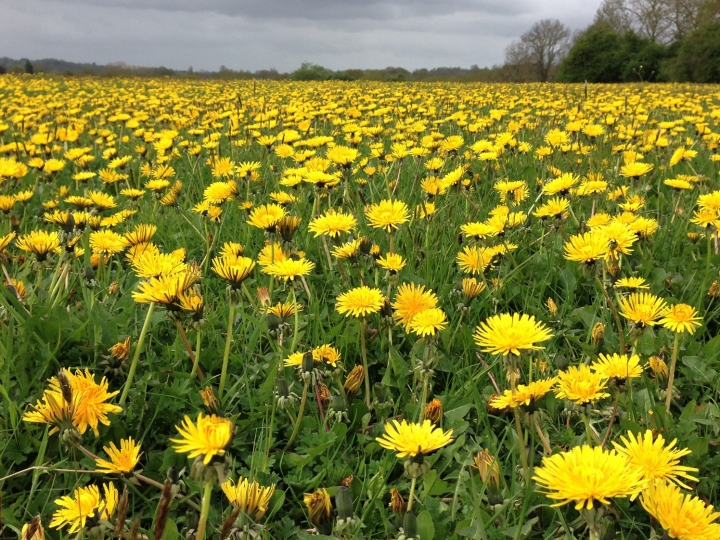
















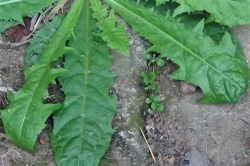
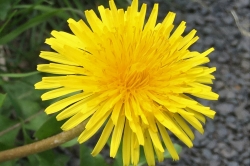
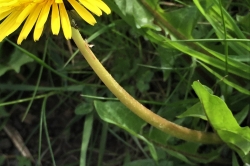
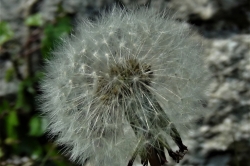
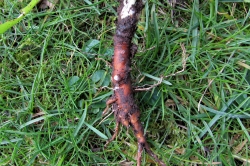
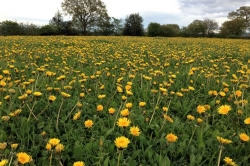





9 comments for Dandelion
This is a great website, I’m really happy to have found it. Dandelion leaves are commonly picked in Italy, especially by older people who eat them regularly and they are widely thought to be good for the liver. They are boiled first and then sizzled in olive oil, garlic and perhaps some chilli and salt. This second step reduces the bitterness. As you say, the flavour grows on you.
Just found your website !
I am so happy to have found it, this is what I have been searching for.
I am so passionate about the benefits of foraging for wild fruit and herbs, free food that we can eat and beneficial for our health.
I love your website, It’ like a breath of fresh air! It’s easy to negotiate and the photography is excellent are very clear, plus all of the plant is photographed in it’s stages of growth which helps to identify it when foraging.
I also love the way the video is produced I like the commentary as well it show the plant growing in it’s natural habit . For a novice like myself when out and about looking for herbs it will be good as I can print out the various plants.
.
I would love to come to one of your forage days/ courses and share my interest with like minded people but unfortunately I live in Halifax, West Yorkshire, which is quite a distance away for me to travel for a few hours,I but would just like to finish by saying “well done to all the team for producing a great website!
I will be a constant visitor.
Regards
Barbara
Hi Barbara, thank you for your lovely comments :). Our nearest courses to you are in the Yorkshire Dales, we should be running some more courses there next spring and summer.
My former professor of plant ecology suggested that the name comes from the shape of the seed – – which looks very like a lion’s tooth (I have read that it refers to the jagged leaves – but a quick look at the seed is convincing)
Great info, thank you for a wonderful site, certainly learnt so much more!
You can keep the dandelion leaves in salt water overnight to remove the bitterness
can the dandelion help with a urine infection
Dandelion is a diuretic so helps with releasing urine and has been used in the past to help ease the symptoms of a urinary infection. It is best to eat the leaves disguised in a salad with dressing as they are quite bitter. It can also be treated like spinach, cooked and seasoned with olive oil and lemon juice. The first time I tried it cooked I found it too bitter but with every try it grew on me and I now like the taste.
I would like to say, I do a lot of Research, and now, I’m Retired, I have a lot, of time, to learn: “Knolage”, Is, a, Very Powerful, Thing?